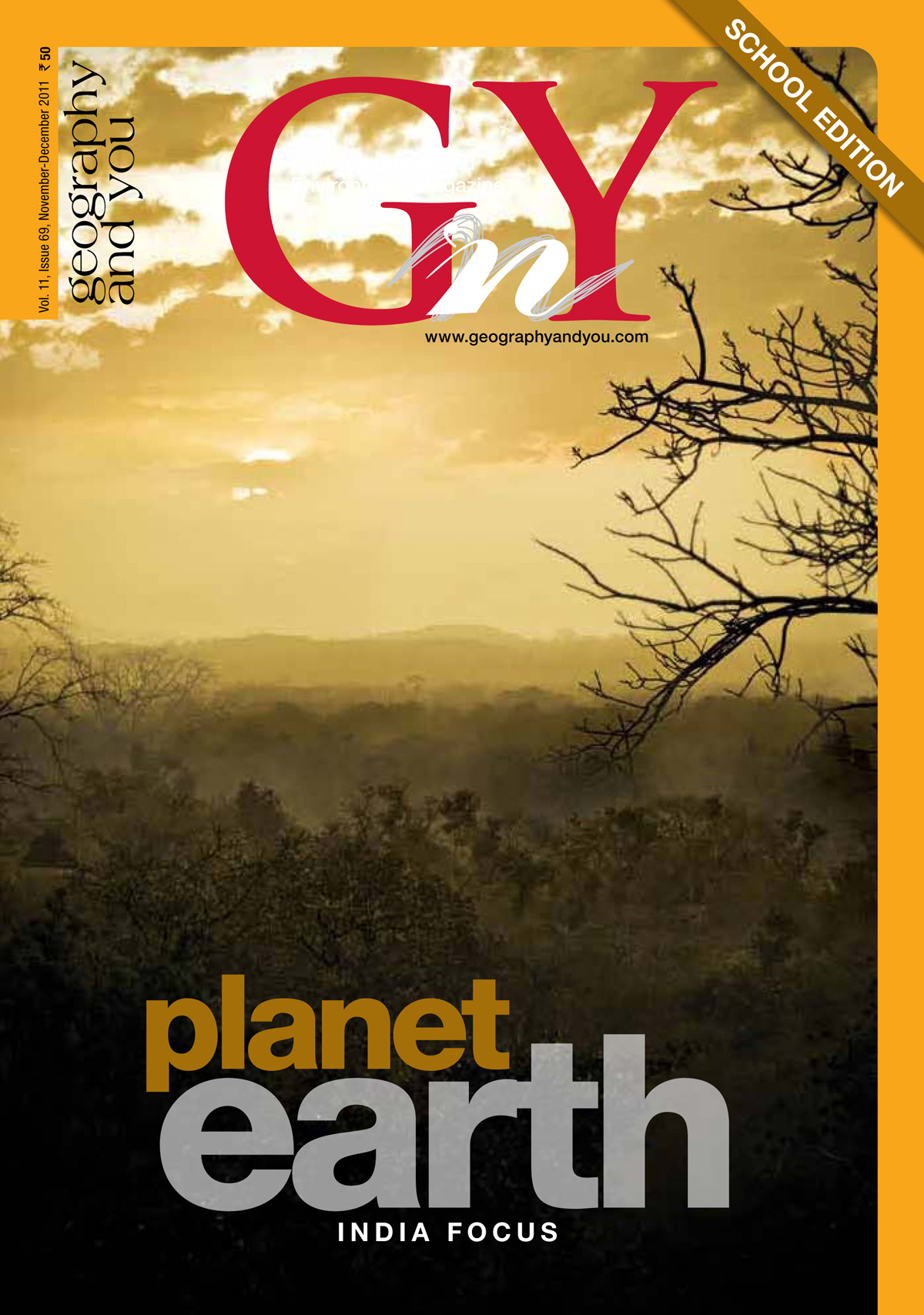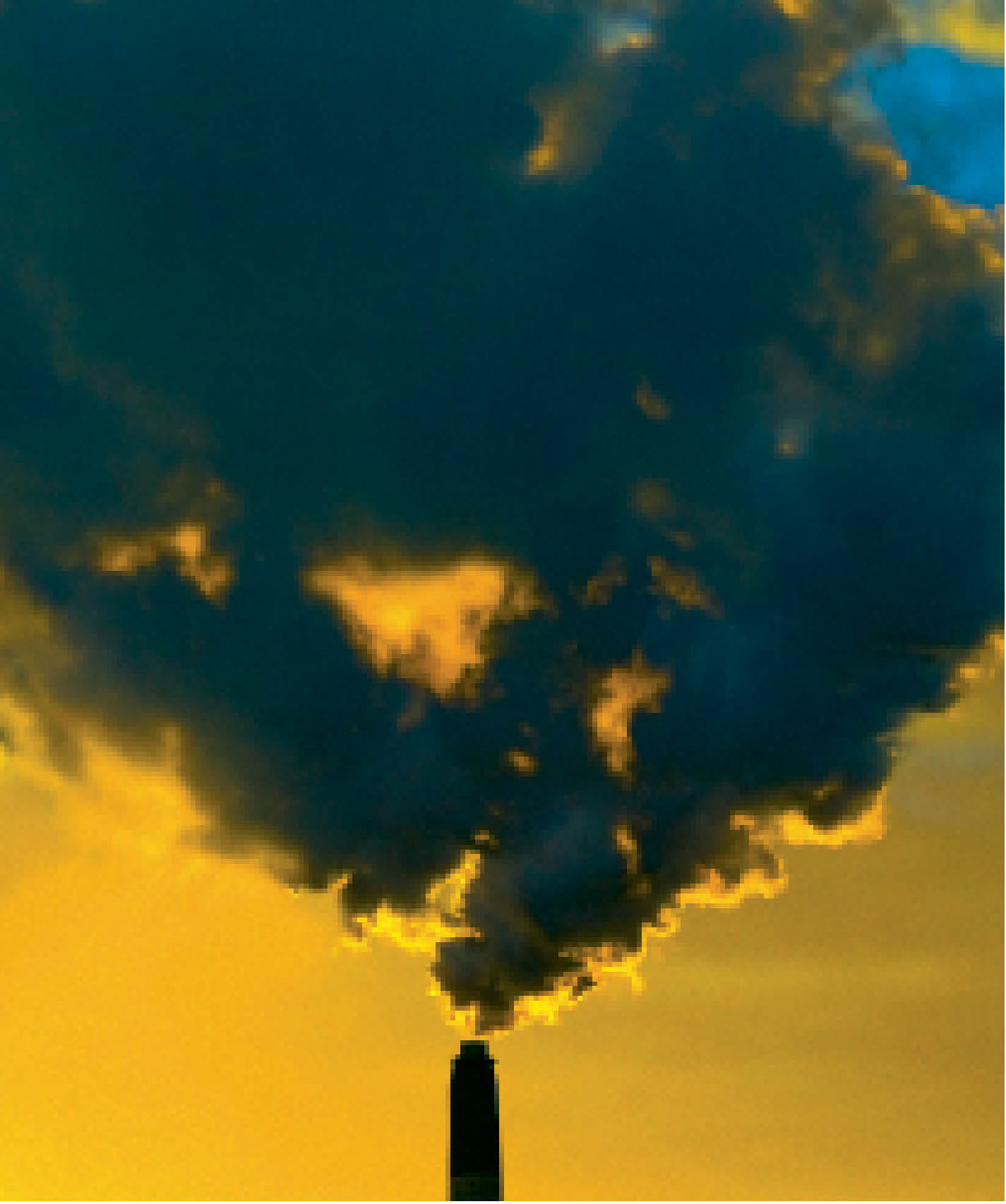
Inside this issue
Earth Cycles
Carbon dioxide is the most available form of carbon for living organisms and the process by which it is cycled around the ecosystem, quickly or over million years is called the carbon cycle (Fig. 1). Although the amount of carbon dioxide we emit increases year by year, the rate at which the gas accumulates in the atmosphere has slowed. The increase in carbon dioxide has been caused by many factors, but principally through the burning of fossil fuels in power plants, factories and cars, and the manufacture of cement. Between them, these account for approximately 80 per cent of the 10 billion tons of carbon we release into the atmosphere each year.
Nitrogen is an element vital to all life processes on Earth . It comprises of 78 per cent of the atmosphere, and is embedded in every living tissue. It is a component of amino acids, proteins and nucleic acids. With the exception of carbon, nitrogen is the most universal element of life.
IPCC Special Report on Renewable Energy Sources and Climate Change Mitigation, 2011. As emission rates substantially exceed natural removal rates, concentrations of CO2 will continue to increase, which will raise global mean temperature. In the absence of additional climate policies, the Intergovernmental Panel on Climate Change (IPCC) projected in 2007 that global average temperature will rise over this century by about 1.1°C to 6.4°C. This range variation arises from uncertainty about the amount of greenhouse gases that will be emitted in the future and from uncertainty about climate sensitivity.
Crustal Dynamics
The jigsaw fit, one of the strongest evidences of Continental Drift Theory was propagated by A Wegener in 1912. Although remarked upon way back in 1620, with several scientists believing that the present day continents were the fragmented pieces of preexisting larger landmasses (supercontinents), it was only in the 1920s that the Theory gained prominence.
The Indian plate, separated from the Antarctic, started moving to the north northeast about 180 million years ago. The present day movement of the Indian plate from the Carlsberg spreading ridge results in collision in the Himalaya and subduction in the Andaman-Sumatra. These plate margins, therefore, are the major seismic belts of the moving Indian plate.
Earth’s crust is relatively lighter as compared to the denser mantle over which it lies and therefore behaves as if it is floating. Areas of the earth’s crust rise or subside to accommodate added load so that the forces that elevate landmasses balance the forces that depress them.
In recent years it has been possible to explore geological activity on the deep ocean floor. Using a submersible research vessel such as the United States’ Alvin, scientists have been able to make personal visits to deep sea sites rather than merely collecting samples from drilling. One of the most interesting discoveries made was ‘black smokers’ mineral enriched hot springs (or sometimes coloured white instead of black) from active regions of mid-oceanic ridges. They even have their own specially adapted marine animals and may be key sites for the origin of life on Earth.
Earth Forces
Landslides frequently occur in about 15 per cent of India’s mountainous terrain, especially affecting the states of Sikkim and Mizoram.
Cyclones are areas of closed spiralling winds initiated by atmospheric disturbances around low pressure areas over the Indian Ocean, often resulting in destructive landfalls in the sub-continent. The air circulates inward in an anticlockwise direction in the northern and clockwise in the southern hemisphere.
Tsunamis are generated when the sea floor abruptly deforms and vertically displaces the overlying water. Recognising the imperative to put in place an early warning system for the mitigation of such disasters that cause severe threat to nearly 400 million of the Indian population that live in the coastal belt the Ministry of Earth Sciences has established a tsunami warning centre at Hyderabad.
Avalanches, a sudden rapid flow of ice/snow down a slope, occur in ice bound terrain. The frosty covering, precariously held to slopes, coupled with excessive amounts of snow layering and mixed with unpredictable weather patterns such as sudden warming are the makings of a disaster. The higher reaches of the Himalaya remain under a perpetual snow where thousands of avalanches occur, involving the movement of thousands of tons of ice and vertical displacements of over 1,500 metres.
Volcanic activities frequently occur along plate boundaries where pressure underneath the crust is released through cracks - pushing out magma and sometimes water and steam. The process of volcanism denotes eruption of molten rocks at the earth’s surface, often accompanied by rock fragments and explosive gases. Volcanism can take various forms, one being the creation of new crust along some 50,000 kms of ocean floor fissures where molten rock penetrates the surface and begins its divergent movement at the mid oceanic spreading ridges. In fact about 75 per cent of the world’s volcanoes are on the seafloor.
Living planet
According to the provisional Census figures, although decadal growth in India’s population has registered the sharpest decline during 2001-2011, in terms of absolute numbers the population has increased by more than 181 million over the decade. India today sustains 17.5 per cent of the world population in 2.4 per cent of its geographical area.
People move in and out of places every day and have done so throughout human history. This short essay outlines the pattern of migratory movement and reflects an ever changing India. About 29 per cent of India’s population are migrants, which impacts the cultural landscapes in ways that often lasts well beyond lifetimes.
Apart from the exemplary and well promoted arts of Chhattisgarh - Dhokra and Loha shilp, there is a legacy of tribal crafts that are yet to receive resplendent accolades. The essay attempts to showcase a few of them.
India ranks among the top ten species-rich nations and shows high endemism. As per the 4th National Report on Biological Diversity (2009), Govt. of India, in India, so far over 91,200 species of animals and 45,500 species of plants have been documented in its ten biogeographic regions.
India's Outdoors
In brief
Dear readers, As the year comes to a close, targets for the new year gush with promise. As Phunsukh Wangdo of 3 Idiots fame would extol, the virtue of quality over quantity cannot be denied. Times have changed in unprecedented ways resulting in lopsided educational growth of the younger generation.

